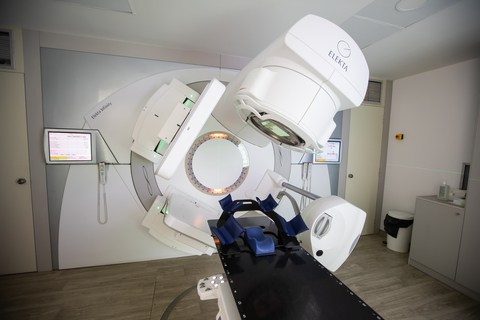Expanding Treatment Horizons: CIRT’s Potential for Mesothelioma Patients

When it comes to treating early-stage cancer, surgery is often the recommended approach. But did you know that some patients choose a different option – radiotherapy? In recent years, a special type of radiotherapy called Carbon-ion radiotherapy (CIRT) has become popular, and a study from Japan has shown how it can help people with early-stage lung cancer. CIRT also has treatment applications in mesothelioma.
CIRT: A Different Kind of Treatment
Carbon-ion radiotherapy, or CIRT, is a unique way to treat cancer using special particles called carbon ions instead of X-rays. This treatment has several advantages, making it an attractive choice for people who don’t want surgery. CIRT is known for its ability to control cancer locally while causing fewer severe side effects. It’s becoming more widely available worldwide, but Japan leads the way with the most facilities offering this treatment.
In 2016, Japan started a big study to learn more about the effects of CIRT for lung cancer. They involved all hospitals in Japan that offered CIRT for lung cancer treatment. The data collected from this study gives us valuable information about how well CIRT works for people with early-stage lung cancer. And it gives hope to mesothelioma patients.
What the Study Found
The study looked at patients who received CIRT in Japan between 2016 and 2018, and here are the important things it discovered:
Who Were the Patients? Most of the patients in the study (86%) had stage IA lung cancer, and the rest (14%) had stage IB lung cancer. Some patients were diagnosed based on their symptoms without having a biopsy. Almost all the tumors (97%) were found on the outer edges of the lungs.
How Well Did They Do? The study showed that patients who got CIRT had good results over a 5-year period. Their overall survival rate was 81.8%, their cause-specific survival rate was 91.2%, their progression-free survival rate was 65.9%, and they had a high local control rate of 95.8%. This means that CIRT helped many patients live longer and better.
Factors That Matter: The study also found that a person’s age was important for overall survival. For progression-free survival, age and a measurement called consolidation/tumor ratio played a role. This information can help doctors choose the best treatment for their patients.
Safe Treatment: The study showed that CIRT is a safe treatment option. There were no severe side effects (grade 4 or higher), and only one patient had a grade 3 radiation-related lung problem.
Real-World Data Reveals Success of CIRT
To sum it up, the study tells us that CIRT can be a great way to treat early-stage lung cancer. It’s a treatment option with good outcomes and low side effects. For patients who can’t have surgery or prefer radiotherapy, CIRT is a positive choice that can help them live longer and better.
As researchers continue to explore new ways to treat cancer, it’s important to consider all the options. Carbon-ion radiotherapy is one of those options that looks promising, offering hope and a different choice for patients and their doctors.
Source
Kubo, Nobuteru, Hiroaki Suefuji, Mio Nakajima, Sunao Tokumaru, Naoko Okano, Daisaku Yoshida, Osamu Suzuki, et al. “Five-Year Survival Outcomes after Carbon-Ion Radiotherapy for Operable Stage I Non-Small Cell Lung Cancer: A Japanese National Registry Study (J-CROS-LUNG).” Journal of Thoracic Oncology 0, no. 0 (November 1, 2023). https://doi.org/10.1016/j.jtho.2023.10.016.





